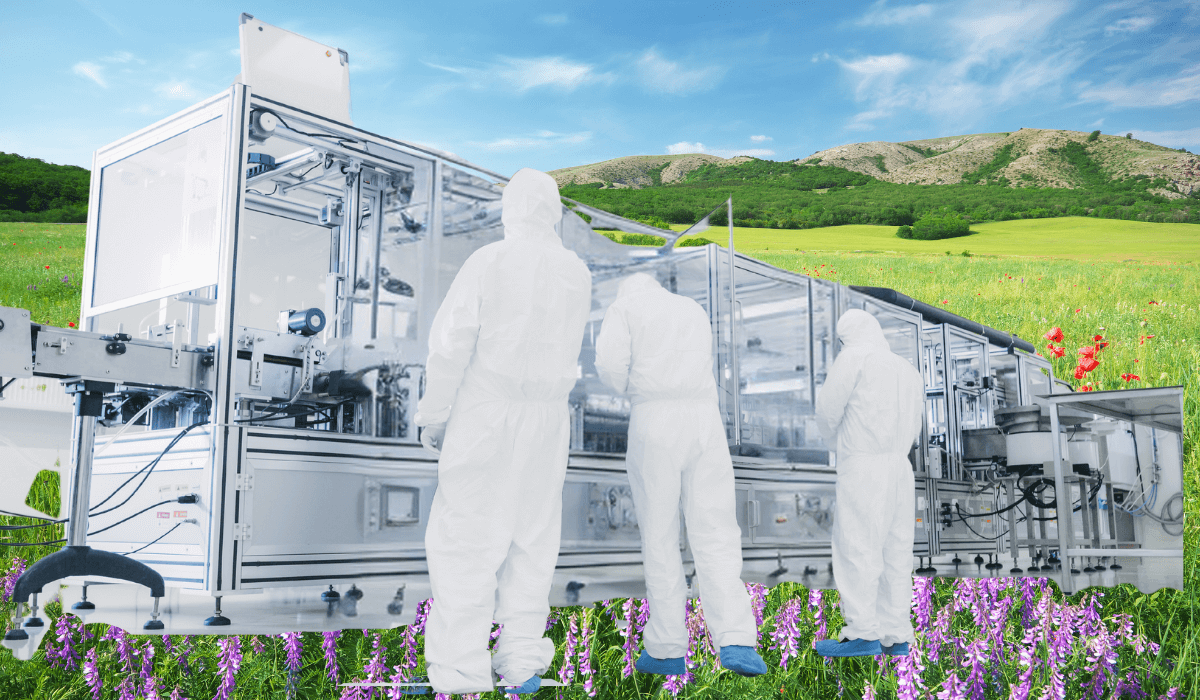For our industry to fully embrace environmental sustainability, we need the entire supply chain involved. The industry giants can make all the proclamations they want, but without the support of their suppliers and their suppliers’ suppliers, they will find it very difficult to achieve their goals.
Equipment is central to fab and assembly operations, and tool makers have many avenues to consider when it comes to sustainability. They need to work both upstream and downstream. They buy materials and components and have choices in suppliers. Their tools also consume electricity and chemicals during use, affecting their customers’ emissions and resource consumption.
You can learn some sustainability strategies for equipment suppliers by looking at what some mid-size equipment companies (all 3D InCites members) are doing.
Veeco
With 1200 employees and $600 million in annual revenue, Veeco is not a small company, but neither is it a multinational corporate giant. Its recent sustainability efforts emphasize knowing the starting point, using SEMI’s S23 guidelines as a framework. Veeco now has baseline values for inputs of materials, energy, and water, a critical step to take before charting a path toward improvements.
Veeco also has a program to refurbish and repair tools, including some that have been in service for over 20 years. Doing so provides a revenue stream while extending the lifetime of the tools and components, thereby saving resources. This is the type of sustainability program that equipment suppliers of any size can implement. They can follow Veeco’s model and implement a certification program for pre-owned equipment.
LPKF Laser & Electronics
LPKF began tracking carbon emissions and other environmental data in 2021. Like many equipment manufacturers, the company buys components from multiple suppliers and assembles them into a tool. LPKF documents the presence of substances of very high concern (SVHC) in these components, aiming to eliminate SVHCs from its supply chain. There is no guarantee it will meet this goal, but without a process in place, LPKF wouldn’t have the data to know where to start.
For LPKF, hazardous waste management is primarily an issue during the use of its laser-induced deep etching (LIDE) tools. In addition to encouraging customers to recycle hazardous chemicals on-site as many times as possible, LPKF considers ways to substitute toxic chemicals with safer ones. It conducts an annual substitution survey to investigate potential replacements. This is a helpful policy. Speaking out about where substitutions are possible and where they aren’t available can inform the industry.
Onto Innovation
Onto has identified three pillars to its environmental sustainability approach: packaging and materials, energy management, and waste management. These are the issues that all companies in our industry need to address. Onto achieved its 2025 goal of getting 30 percent of its energy from renewables three years ahead of schedule. The next step is to work on a more ambitious target.
Product and package design now encompasses environmental concerns at Onto. Life cycle assessments guide decision-making. This includes everything from sourcing the wood for packing crates to extending the lifespan of its tools. Onto offers technology upgrades to customers moving to more advanced nodes, allowing them to do so without replacing the entire tool.
You Have Agency
The steps that these companies above have taken are accessible to nearly any company in our industry, regardless of size or location. You don’t need to have millions of dollars at your disposal to set aside for sustainability initiatives. It takes time and effort to measure your starting point or switch suppliers, but the rewards are worth the effort. You will likely find ways to save money in the long run and make your operations more efficient.
If you work at a smaller equipment company, you may think you can’t make a difference or shift industry practices. By sharing efforts and successes, small and mid-size suppliers can collectively do a lot. You can affect change at your workplace by leading the way in tracking your scope 1, 2, and 3 emissions or figuring out how to reduce the carbon footprint of your next tool. You can make a difference beyond your company’s walls by developing a more stringent supplier code of conduct or helping customers conserve energy.
This blog post focuses on strategies for equipment suppliers, but the lessons apply equally to companies that provide materials, components, or software. Future Sustainability 101 blog posts will feature examples from those sectors.



















